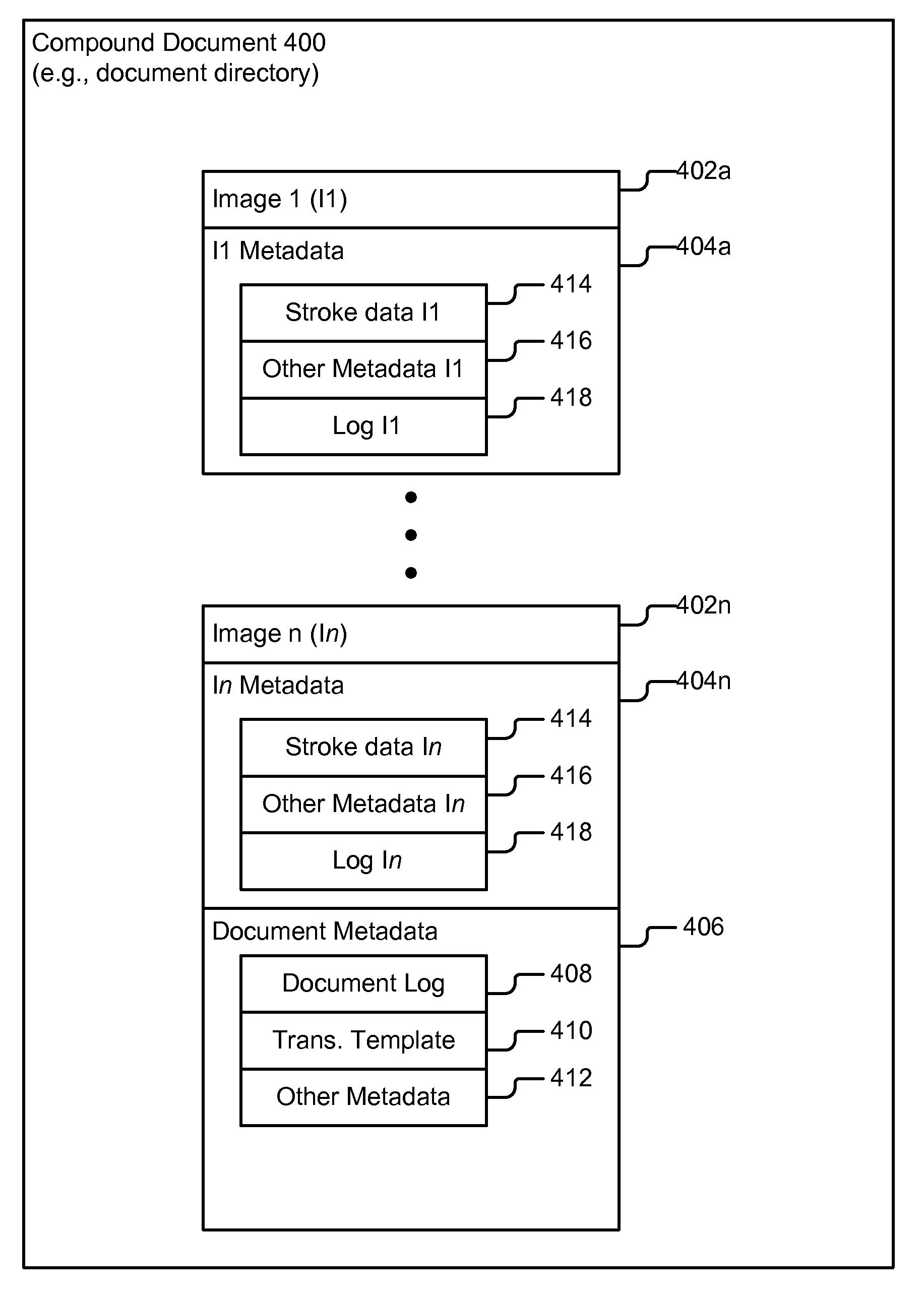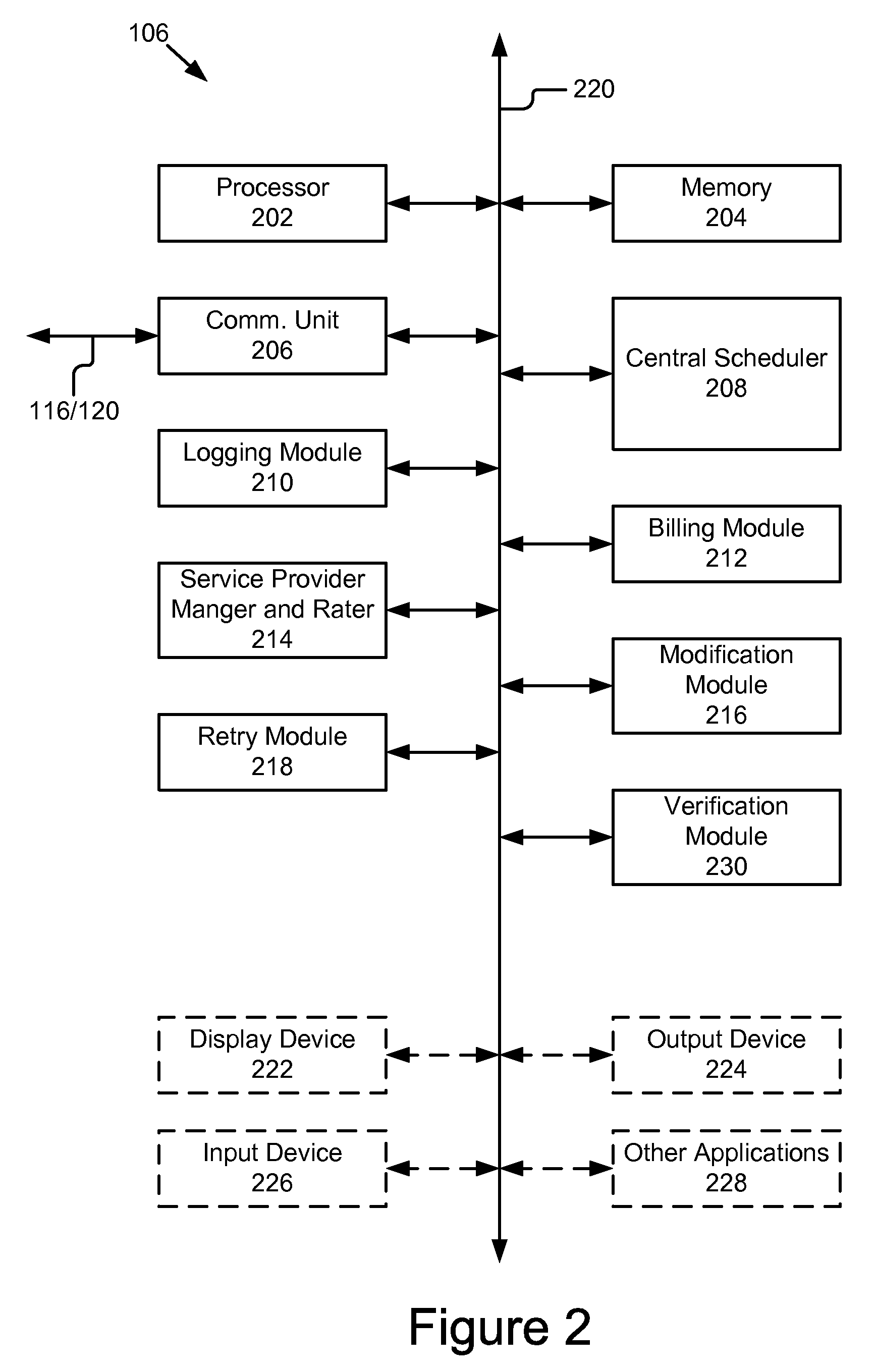Paper-like forms processing system & method
a processing system and paper-like technology, applied in the field of distributed computing systems, can solve the problems of high cost of paper-based processing, limited availability of paper forms, slow and difficult copying,
- Summary
- Abstract
- Description
- Claims
- Application Information
AI Technical Summary
Benefits of technology
Problems solved by technology
Method used
Image
Examples
second embodiment
In a second embodiment, the document transfer module 316 is a routine for performing file transfer. Various file transfer methods can be used to move documents on and off the portable computing device 102. The portable computing devices 102 could run an ftp, http, or webdav server and other devices could push or pull documents on the portable computing devices 102. The portable computing device 102 could also be configured to get or post new documents to an external server, again via ftp, http, rsync, webdav, or another protocol.
third embodiment
In a third embodiment, the document transfer module 316 is a client communication programs such as for communicating via MMS or on other communications protocols. XMPP, a protocol used in instant messaging, is used to provide document and stroke communication with the portable computing devices 102. Instant messaging protocols are useful because any member of the messaging group can initiate a message, even while another member is transmitting a message. For the portable computing devices 102 this could allow a service to transmit an image for the portable computing device 102 at the same time as strokes are being transmitted from the portable computing devices 102 to paper-like forms server 106. Instant messaging protocols can also be useful if a group of portable computing devices 102 is sharing a display space and thus all members of the group may be informed of new strokes.
fourth embodiment
In a fourth embodiment, the document transfer module 316 is a custom application. Of course, information may be transferred to the portable computing device 102 with special purpose applications designed to work with the portable computing device 102 using a specific API.
The display device 322 is an electronic paper display such as manufactured and sold by E-ink. In other embodiments, the display device 322 is a liquid crystal display (LCD) or any other similarly equipped display device, screen or monitor. The display device 322 represents any device equipped to display electronic images and data as described herein. The display device 322 is sized sufficient to show at least a small ‘page’ of information. In different embodiments, the display is binary (only two different values for pixels), monochrome (multiple shades of one color), or allows multiple colors and shades. The display device 322 is preferably a light-weight, low-power display. In one embodiment, the display device 32...
PUM
 Login to View More
Login to View More Abstract
Description
Claims
Application Information
 Login to View More
Login to View More - R&D
- Intellectual Property
- Life Sciences
- Materials
- Tech Scout
- Unparalleled Data Quality
- Higher Quality Content
- 60% Fewer Hallucinations
Browse by: Latest US Patents, China's latest patents, Technical Efficacy Thesaurus, Application Domain, Technology Topic, Popular Technical Reports.
© 2025 PatSnap. All rights reserved.Legal|Privacy policy|Modern Slavery Act Transparency Statement|Sitemap|About US| Contact US: help@patsnap.com



